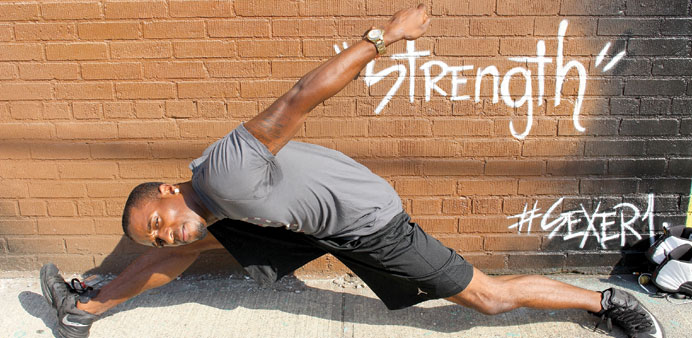Havoc Marche, one of New York’s most prominent flexers, busts out his moves.
By Stephanie Ott
When Havoc Marche walks through the streets of Bushwick in New York, it’s with a flowing, sinuous, almost snake-like movement.
That’s because the 25-year-old is one of the city’s best known “flexers.” Flexing is a type of dance which developed in the poorer districts of Brooklyn in the early 1990s.
It offers youths an alternative to hanging out with gangs and crime, a vent for their emotions and frustrations about racial discrimination in the United States.
“Our movements express where we come from, what problems we struggle with,” says Marche. “We tell stories that people can relate to — about anger, love and sadness.”
He come from the Brooklyn neighbourhood of Bedford-Stuyvesant and has been flexing since he was 14.
“Where I can’t find words to express how I feel, I do it through dance instead.”
For the flexers, their moves are much more than just street dance. It’s about expressing a whole culture.
With Flex N Brooklyn, which began in the district of Red Hook in 1993 and then spread, young people have a weekly chance to showcase their new, improvised moves and to compete for the title of King of the Street.
Flexing combines seven different types of dance. There’s “bone breaking” in which dancers can twist their arms round 180 degrees, making it appear that their joints have left their sockets.
In “get low” dancers have to have enormous strengthen to keep dancing for minutes at a time while crouched down low. “Pauzing” involves the jerky movements that make it appear as though you’re stopping and starting a video.
The film Matrix as well as pop star Michael Jackson and martial art kung fu have all influenced flexing.
Reggie “Regg Roc” Gray is regarded as one of the movement’s pioneers. “Flexing is our culture and it has a serious message behind it,” he says.
“It’s important to create something real, especially in these times, after the death of [Michael] Brown in Ferguson, [Eric] Garner in New York und [Trayvon] Martin in Florida, and racial discrimination and injustice and youth crime all over America,” he said, referring to black youths killed recently.
“Flexing brings all of us together. It’s a passion that unites us,” he continues.
The 33-year-old is convinced that flexing will one day be as meaningful to the world of dancing as ballet.
What began as an underground movement in Brooklyn has now developed into a huge trend. Flexing events now take place all over New York every month.
There are films about flexing and groups tour the world, bringing the dance style to Europe and Asia.
In September Reggie travelled to Australia with 10 other New Yorkers. March is soon set to travel to France and Germany where he’s performing as well as giving lessons.
“Flexing is our life,” says Gray. “I could’ve dealt with drugs or joined a gang when I was younger, because these were my options on the street.”
Instead he found flexing. “Now, I’m travelling around the world and I can introduce people to our culture, that comes from the hoods of Brooklyn. We just need a single spark to create a flame.” —DPA



